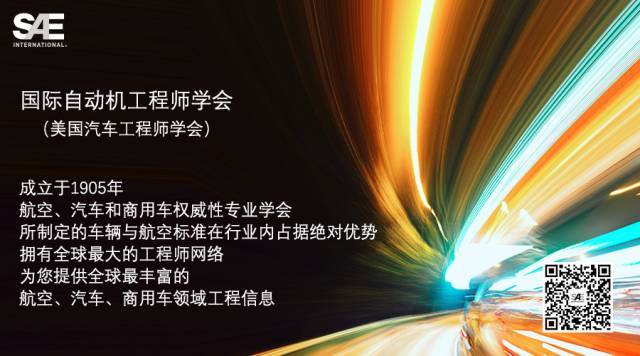 在2017年高效内燃发动机研讨会上,博格华纳首席技术官Chris Thomas揭露了自动驾驶汽车“不为人知的小秘密”。
在2017年高效内燃发动机研讨会上,博格华纳首席技术官Chris Thomas揭露了自动驾驶汽车“不为人知的小秘密”。
未来,高度自动驾驶汽车(SAE 4级)和全自动驾驶汽车(SAE 5级)将采用何种推进系统?考虑到自动驾驶汽车需要消耗大量电力进行数据处理,那么为了抵消这部分“自动驾驶开销”,未来的自动驾驶汽车需要比当今车辆更高效的推进系统。根据博格华纳(BorgWarner)副总裁、CTO Chris Thomas的说法,解决这个问题的成本不会低。
4月3日,在底特律举行的SAE 2017年高效内燃发动机研讨会(SAE 2017 High-Efficiency IC Engines Symposium)上,Thomas告诉在场观众,光是处理越来越多的传入数据和车载数据(来自车载传感器阵列、其他汽车、道路设施及云端),自动驾驶汽车就需要消耗1.5 kW至2.75 kW的功率。这,就是自动驾驶汽车“不为人知的小秘密”。
举个例子,拿一辆典型的B级车来说,大约每消耗39W电力就相当于排放1g CO2。
Thomas指出,来自英特尔(Intel)和英伟达(Nvidia)的新型专用处理器可逐步减少最高90%的电力消耗。如果电力消耗水平真的可以下降90%,那么一辆常见车辆的数据处理功率需求应该在200 - 350 W左右。
“根据我们的计算,在最好的情况下,我们也仅能将每辆自动驾驶汽车的等效CO2排放水平降低至10g到20g克。”Thomas解释说,这仍然将为车辆推进系统增加3到6%的电力负担,严重影响车辆的能效表现。
“这意味着,未来自动驾驶汽车的推进系统必须比今天的好很多才行。”Thomas指出,“我们需要将BTE提升至50 - 51%。如果内燃系统的能效不能显著提升,那么自动驾驶汽车将很难成为现实。”
尽管Thomas认为自动驾驶汽车并不会具体区分推进系统,但在未来20年中,从对冗余制动系统(及冗余电池)的需求考虑,插电式混合动力车可能是最实际的选择。他大胆猜测,纯电动汽车可能也不会在自动驾驶领域扮演重要角色。
“自动驾驶汽车的正常运行时间正在不断增加,每天的累计行驶时间可能超过10小时,必须进行大量充电。”他解释说,“在纽约城,出租车每天的行驶时间一般在18个小时,这同时意味着夏季每日要开18个小时的空调,冬季要开18个小时的暖气,而只要开空调或是暖气,纯电动车的续航里程将立刻减少30到50%。因此,我觉得电动汽车可能不会出现在商用领域以外的自动驾驶汽车市场中,至少在短期内不会。”
如果城市中心地区能够提供电池充电/更换站点等设施(类似于目前的加油站),这种情况可能会发生变化。Thomas指出,但大量电动车同时进行直流快充将导致电网压力激增,这也是一个很实际的问题。
What type of propulsion system will power the highly automated (SAE Level 4) and fully autonomous (SAE Level 5) vehicles of the future? Such systems will need to be more efficient than those used in today’s human-driven vehicles, to offset the “autonomous overhead”—the significant amount of electrical power required for data processing alone. And they won’t be the lowest-cost solution, according to Chris Thomas, BorgWarner’s vice president and CTO.
The 1.5 kW to 2.75 kW needed just to process the increasing deluge of incoming and in-vehicle data—generated from on-board sensor arrays, from other vehicles, the infrastructure and the cloud—is “the dirty little secret” of autonomous vehicle engineering, Thomas told the audience at SAE’s 2017 High-Efficiency Engines Symposium in Detroit on April 3.
For a typical B-segment vehicle, for example, about 39 W of electricity consumed is equivalent to about one gram of CO2 emitted.
Thomas noted that new dedicated processors from Intel and Nvidia will inevitably help reduce electrical consumption by up to 90%. That means that with a 90% reduction in energy consumption, a typical vehicle’s processing power demand may be 200 to 350 W.
“By our calculations, the best case-scenario is that we’ll end up with about a 10-g to 20-g CO2 penalty per autonomous vehicle,” Thomas explained, translating into a 3-6% burden for the propulsion system and a significant “hit” to vehicle efficiency.
“That means the propulsion system has to be that much better than today’s,” he noted. “We need to get to a 50-51% BTE to make that happen. That’s not plausible without hybridization coupled with significantly more efficient combustion engines.”
While Thomas considers autonomous vehicles to be “propulsion agnostic,” the need for redundant braking systems (and redundant batteries) makes plug-in hybrids the practical prime-mover in this area for perhaps the next 20 years. He reckons battery-electric vehicles won’t play a major role in autonomous use during that period.
“The increased uptime of autonomous vehicles could mean more than 10 hours per day of operation, in which a significant amount of charging would be required,” he argues. “A typical New York cab runs 18 hours a day which means it needs 18 hours of air conditioning in the summer and 18 hours of heat in winter. In a BEV you lose 30-50% of the range when you turn the A/C or heat on. So I don’t think we’ll see BEVs used for autonomy outside of some commercial vehicles, at least in the short term.”
If battery exchanges/swapping at centralized locations were made accessible, that scenario could change if an infrastructure (similar to gas stations) were implemented, he said. DC fast charging of entire fleets of vehicles would create too great a spike in the electrical grid to be practical, Thomas noted.
Author: Lindsay Brooke
Source: SAE Automotive Engineering Magazine
等级
打分
- 2分
- 4分
- 6分
- 8分
- 10分
平均分
